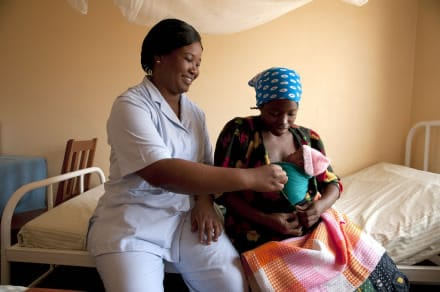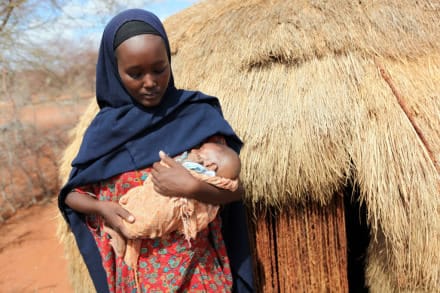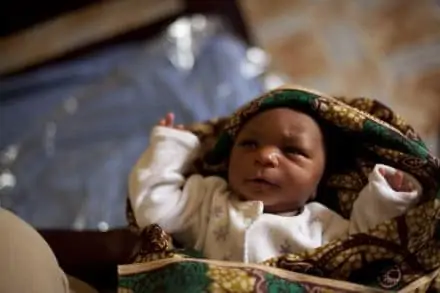Tomorrow my niece Ava is supposed to be born, but that isn’t going to happen. I know this because she is already here. She was born 5 weeks early at only 4 lbs, 12 ounces and 18 inches long. She was the smallest baby I had ever seen.
Mothers dream about the day their water breaks and they are rushed to hospital to deliver their happy, healthy baby. In our fantasies, we’re always full term and our only worry is about the pain involved during labor. We never imagine that our baby will come too early. As anxious grandparents, aunt and uncles, we imagine the day we will get the call that “it’s time!” Again, we never imagine that it will be before week 40. For us, tt did. Courtney, my sister-in-law, had a fairly easy pregnancy up until her last trimester. What we thought was just braxton hicks turned out to be actual contractions. Three times she was rushed to the emergency room, three times our family raced to the hospital, and thankfully three times the doctors were able to stop the premature labor. Unfortunately, the fourth time she was not so lucky.
People think that because a baby is considered “viable” at 35 weeks, it means they are born completely healthy and will go home within the normal 2 to 3 days. But that just isn’t true. There is so much their little body still lacks. In Ava’s case, complications arose almost immediately. The monitors during the delivery showed that Ava’s little heart wasn’t keeping up and her heart rate was dropping dangerously low. She literally had to be pulled from my sisters body with suction. Ava was having difficulty breathing because her lungs were not ready. My brother was able to follow Ava as she was tested and ultimately hooked up to machines that would monitor every breath. She was put on oxygen and IV fluids and for the next three days her new, first time parents were not allowed to hold their baby. We were not even allowed in the same wing of the hospital she was in. Not only was Ava born in the middle of a cold winter, she was born during the height of one of the worst flu seasons we have ever had. She was on complete lockdown. It wasn’t until the third day that her mommy was finally allowed to give Ava the nourishment she needed.
Over the course of a week, Ava grew stronger. Today, except for her small stature, you wouldn’t even know that Ava was born 5 weeks early. Her doctor gives all of the credit to Courtney, who chose breast as best. The colostrum (first milk) jump started her immune system. It was filled with the nutrients Ava’s quickly developing body needed. Courtney made an informed decision that breast was best for her child. It was a personal decision that my brother, the doctors, and our family whole heartedly supported. In the developing world, the decision to breastfeed, or lack thereof, can very often be the determining factor between life and death.
In the U.S., mothers choose to breastfeed for a variety of reasons but in most cases the reason isn’t that their child will die otherwise.
Imagine for a moment that you were handed a beautiful baby. It was yours to love and cherish. It was yours to stay up through long colicy nights and to be rewarded with never ending drooly grins. Over the next two years you would watch this child learn to smile, sit up, crawl and even walk. You would listen to them speak and hear them say mama for the first time. You were promised that you would never miss a happy moment. But in return, you would also listen to this child cry from hunger every night. You would watch their growth become stunted and their mental development slow. Eventually, perhaps by the time they were five, or six or seven your child would die from malnutrition. You are told there is NOTHING you can do to stop it. No one has to tell mothers in developing countries these things, they don’t have to imagine. They live it, every single day.
As the cause of more than 2 million child deaths a year, malnutrition is a major driver of child deaths in the developing world.
Unfortunately, these mothers don’t know the “secret”. They lack funding, education and information that would allow their child to live a long healthy life. Save the Children’s new report “Superfood for Babies: How overcoming barriers to breastfeeding will save children’s lives” shows studies on immediate breastfeeding in Ghana and Nepal, that as many as 830,000 babies could be saved a year if all moms breastfed in the first hour after birth. Even more babies could be saved if all of these moms breastfed for a longer period of time like 6 months.
So what can we do? How do we give the mothers the tools they need? It’s as easy as a signature. Save the Children is calling on Secretary of State Kerry to recommit to the 1,000 Days Partnership that expires in June.
1,000 days is the critical time from pregnancy and a child’s second birthday where there are the best chances to prevent malnutrition. Supporting moms to breastfeed must be central to these efforts.
Since 2010, this international partnership has already helped countries such as Indonesia, Ethiopia, Bangladesh and Tanzania develop strategies around fighting childhood malnutrition through supporting breastfeeding and other important steps.
I am a part of the Global Team of 200 and Social Good Moms‘ 24-Hour Blogathon spreading the word about Save the Children’s new breastfeeding report, Superfood for Babies. Sign the petition urging Secretary Kerry to help mothers around the world get more support around breastfeeding and lifesaving nutrition for their babies.




THIS IS TOUCHING AND GOOD STORY!!!
I can’t imagine how stressful that would be.
Breast is best, especially in that situation.
that was an awesome post and i think you have some very valid points
We are thankful that medicine has advanced to a point when they can save these tiny babies.